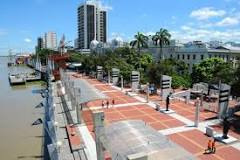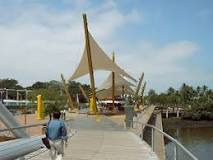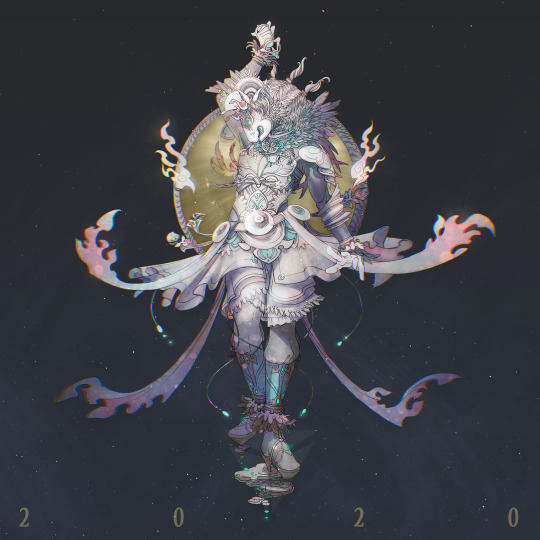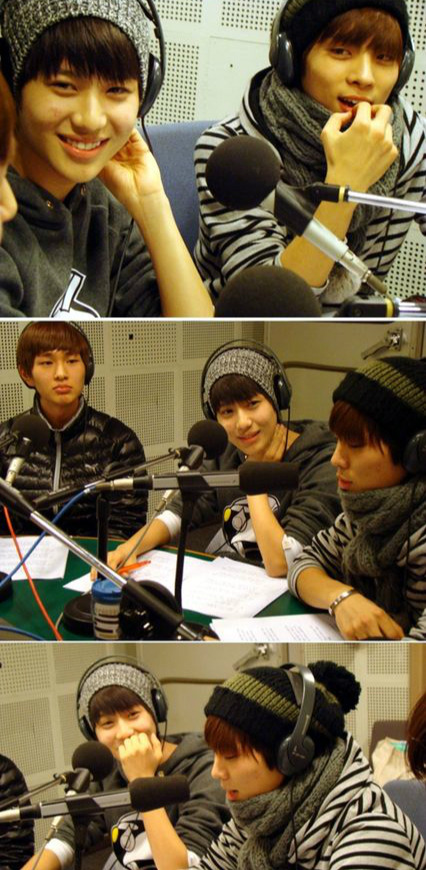#090103
Text


090103 - shimshimtapa radio
13 notes
·
View notes
Note
do you think you could do a palette based on the album cover of “who really cares” by tv girl?
Here you go! Hope these work for you!

#0a0102 | #68033d | #eb2587 | #0a4ca2 | #1d2e7e

#233a98 | #ed2789 | #4c062e | #09113f | #090001

#0b0000 | #074da2 | #ee288a | #bb0f70 | #310519

#0b2d61 | #710c4e | #660f41 | #cb0f7e | #ff2a86

#064b99 | #2262a7 | #232126 | #090103 | #7c094b

#130810 | #e12e8c | #6d1a5d | #152263 | #ff54ad
97 notes
·
View notes
Text
Lugares turisticos de Guayaquil
Malecón 2000
El malecon 2000, ubicado en la ciudad de Guayaquil, junto al rio Guayas, es un proyecto de regeneración urbana del antiguo Malecón Simón Bolivar.
Recomendaciones o Tips al visitar
Usar zapatos comodos
Usar protector solar y gorros
Llevar agua
Historia
Para 1845 tenía una milla y media de largo con asientos de listones de madera y con lámparas de hierro fundido para iluminarlo. En 1906 el Cabildo construyó su muro de contención, entre el barrio Las Peñas y la calle Colón, donde se ubicaba el desaparecido mercado de la orilla.
Opinion personal: Me gusta visitarlo ya que es un lugar divetido y para estar en familia.

Museo Municipal
Esta Ubicada entre la calle sucre entre calle chile y calle, pedro carbo
Historia
El Museo Municipal de Guayaquil nació como Museo Industrial en 1863, fue su gestor el distinguido guayaquileño don Pedro Carbo quien en aquel entonces presidía la Municipalidad.
Opinion personal: Contiene mucha historia de muestra ciudad en sus libros escritos y guardados de los amentes por el museo. Hay contenido con los nombres de los patriotas que formaron parte de la gesta historica de la independencia de guayaquil.
Opinion personal: Contiene mucha Historia de nuestra ciudad en sus libros escritos y guardados de los amentes de los amantes por el museo.

Malecon del Salado
Esta ubicada en “2do callejon 5 No, Guayaquil 0090511 y es un lugar entretenido para ir.
Historia
Malecón del Salado o Malecón del Estero Salado, construido bajo la administración municipal Jaime Nebot Saadi, en 2009, el proyecto abarca desde la Facultad de Educación Física (también llamado Malecón Universitario) de la Universidad de Guayaquil hasta el Puente del Velero, desde allí cambia de nombre a Malecón del salado.
Opinion personal: Es un buen lugar para visitar con familia y divertirse.

Parque Samanes
Se ubica en “V4W3+HC8, Av. Paseo del Parque, Guayaquil 090502″
Historia
También conocido como Parque Ecológico Samanes, es un parque ubicado en la ciudad de Guayaquil, Ecuador, cuya primera fase fue inaugurada en enero de 2013. En su totalidad contará con una extensión de 851 hectáreas, lo que lo convierte en el tercer parque más grande de Latinoamérica.
Opinion personal: Se me hace divertido y lo puedes pasar con tus amigos ya que hay diferentes sectores.

Hemiciclo de la Rotonda
Esta ubicado en el Paseo de las Colonias Extranjeras 100 y Avenida 9 de Octubre, Provincia Libre de, Guayaquil 090103
Historia
El monumento fue creado para conmemorar la célebre “Entrevista de Guayaquil”, acontecimiento en el cual los libertadores Simón Bolívar (en representación de la Gran Colombia) y José de San Martín (por el Perú) tuvieron un encuentro en la ciudad el 26 de julio de 1822.
Opinion personal: Un lindo lugar para conocer un poco más de la historia de Guayaquil, hay varios city tours que te llevan ahí

1 note
·
View note
Link
On a modest stage inside a tent in downtown Los Angeles, the four members of the South Korean girl group Blackpink assume a diamond formation and aim their fingers like guns at the audience as they launch into the chorus of their breakout hit, “Ddu-du Ddu-du”: “Wait till I do what I ... Hit you with that ddu-du ddu-du du!”
It’s the afternoon before the Grammys at Universal Music Group chairman/CEO Lucian Grainge’s annual showcase, where he presents the company’s prospective superstars to a crowd of record executives and industry types. (Past performers have included Ariana Grande, Halsey and Shawn Mendes.) With their intense choreography, dance-heavy beats and Clueless-esque high-fashion looks, the four women offer the kind of bells-and-whistles pop production that makes them an anomaly not just on today’s lineup, where rappers like 2 Chainz and Lil Baby abound, but also on the charts, where women like Grande serve up their divadom with an extra dose of realness.
The showcase marks Blackpink’s first stateside performance, though the band made history long before: “Ddu-du Ddu-du” became the highest-charting single by a Korean girl group on the Billboard Hot 100 when it peaked at No. 55 last June, and this April the act will be the first Korean girl group to play Coachella, before embarking on a North American arena tour. “Ddu-du Ddu-du,” sung mostly in Korean, is a boastful warning to those who underestimate Blackpink, with a hook (meant to imitate the sound of bullets flying) that’s also a canny invitation to non-Korean listeners -- anyone can sing the words. The buttoned-up UMG crowd seems a little unsure, but also intrigued: Just as Blackpink’s Jennie -- soft-spoken in person, but onstage a fierce singer and rapper -- slides into a rat-tat-tat flow in the second verse, more and more audience members whip out their phones to capture video.
There’s no longer any question that K-pop is happening in America. BTS, the seven-member South Korean boy band, scored two No. 1 albums on the Billboard 200 in 2018 and became the first K-pop group to sell out an American stadium when it played New York’s Citi Field in October. Yet despite the group’s visibility here, K-pop remains somewhat detached from the mainstream: It receives relatively little top 40 airplay despite fan-army pressure on radio stations, its artists rarely tour with non-K-pop acts, and outside of its intensely passionate fan groups, K-pop stars hardly drive the wider “conversation” that someone like Grande can dominate with a single tweet.
Blackpink represents Korean music’s latest, greatest hope at breaking out of the American K-pop box. The group believes its multinational identity gives it global appeal: Sweet-voiced Jisoo, 24, is a South Korean native; buoyant rapper Lisa, 21, is from Thailand; guitar-playing Rosé, 22, grew up in Australia; and Jennie, 23, was born in South Korea but spent some formative years in New Zealand. “You don’t have to understand Korean to understand the music, the visuals, the vibe,” says Jisoo, through a translator. (Rosé and Jennie are fluent in English; Lisa alternates between English and Korean during our interview.) “We’ve got so much Korean culture and so much Western culture in us,” adds Rosé, her Australian accent still pronounced.
And though occasional English lyrics already pepper their tracks, Jennie notes that recording all-English songs is something they “definitely want to do” in the future. (They’re focused on making their debut album first.) Even their sound -- an omnivorous fusion of fist-pumping EDM and booming hip-hop beats with flashes of house, ’80s pop and harmonica-driven folk -- seems conceived for the widest possible audience. “I was immediately drawn to their fierce and empowering energy,” says Dua Lipa, who asked the group to guest on last year’s bilingual banger “Kiss and Make Up.” “They are not just giving you hit songs -- they are sending a message that resonates beyond the lyrics.”
Last fall, Blackpink signed to Interscope Records, which will serve as both a creative and business partner to YG Entertainment, the group’s Korean home and one of South Korea’s three main music companies along with SM Entertainment and JYP Entertainment. These companies serve as label, management firm and production studio, controlling almost every aspect of their artists’ careers. Interscope chairman/CEO John Janick says that YG’s leadership -- Hyunsuk “YG” Yang, its founder, and Teddy Park, Blackpink’s main producer and creative director -- “runs the show,” but the relationship is collaborative: Sam Riback, Interscope’s pop-rock A&R head, has made multiple trips to YG’s Seoul headquarters and “has been sending them lots of different ideas,” according to Janick. “Our goal,” he says, “is to amplify what YG has been doing globally.”
If Interscope can help turn Blackpink into a truly global superstar act, the partnership could become a model for other labels looking to invest in K-pop and even pave the way for joint imprints. “This deal could be a benchmark,” says YG’s Joojong “JJ” Joe, who heads the company’s U.S. operations from a small house near Los Angeles’ Echo Park. It will also confirm Interscope’s foresight about K-pop. In 2011, the label signed the group Girls’ Generation during one of the earlier waves of K-pop imports, when artists like BoA and Wonder Girls worked with Western producers and companies.
At the time, those artists barely made a dent on the mainstream charts, and their backers took a hit: Despite high-profile promotional appearances, Girls’ Generation’sThe Boys LP sold only 1,000 copies in the United States during its first week in 2012, according to Nielsen Music. Since then, however, streaming platforms have made it easier for fans to discover and support Korean music, while the growth of social media has also allowed them to forge deep connections with artists everywhere. “In this era, people find their music and their talented artists on the internet,” says Susan Rosenbluth, senior vp at AEG Presents/Goldenvoice, who helped book Blackpink’s North American tour and notes that K-pop’s stateside audience “does not follow along ethnic lines.”
To Janick, the success of Luis Fonsi and Daddy Yankee’s chart-topping Latin hit, “Despacito,” aided by a Justin Bieber remix, made English-speaking listeners more open-minded in general to music in other languages. “We’re going to have hits from all different territories -- more of them, and more often than we’ve seen in the past,” he says.
But the onus isn’t just on listeners to embrace Korean music -- it’s on industry gatekeepers too. At the UMG showcase, the reaction to Blackpink is enthusiastic, but it feels muted compared with the rousing ovation the crowd gives classic-rock revivalists Greta Van Fleet, whose 2018 debut album was notoriously panned by some critics as derivative. The response to Blackpink’s Interscope deal, however, suggests that attitude could change.
“So many artists on our roster started calling, saying, ‘I want to work with these girls.’ Radio stations were asking when new music was going to be out,” says Interscope executive vp business development Jeremy Erlich, who facilitated early conversations between the label and YG (he and Joe attended business school together). “The industry’s ready. When the music comes out, I don’t think there’s going to be many people saying, ‘This is just a fad.’”
The day before the showcase, the ladies of Blackpink are ensconced in a hotel suite high above downtown L.A. Lisa, dressed in a gray fleece and a checkered coat, spies the Hollywood sign through a corner window and bounds off a couch for a closer look. Her bandmates, cozied up in brightly colored sweatshirts and cardigans, admit they weren’t expecting Los Angeles in February to be so chilly. During some rare downtime the previous day, they went shopping in Santa Monica. “It was supposed to be for fashion,” says Jennie, “but we ended up just grabbing anything that was warm.”
This is Blackpink’s first trip to L.A., but it has been almost a decade in the making. The group’s members came to Seoul from all over the world starting in 2010 to take part in YG’s rigorous recruitment and training process. The company and its competitors hold tryouts both within and far beyond Korea (Rosé traveled to Sydney from her home in Melbourne), seeking recruits who are typically preteens or teens, ethnically Korean and fluent in the language, though these qualities are not mandatory. Lisa, who auditioned in her native Thailand in 2010, didn’t speak any Korean when she began training in Seoul in 2011.
For all four women, joining YG meant enrolling in a kind of full-time pop-star academy that Jennie calls “more strict than school” and that Rosé likens to The X Factor with dorm rooms. For 12 hours a day, seven days a week, the future members of Blackpink -- along with, by Jennie’s estimate, 10-20 other aspiring singers who cycled through the project -- studied singing, dancing and rapping, taking part in monthly tests designed to identify their strengths and weed out subpar trainees. “Somebody would come in with a piece of paper and stick it on a wall, and it would say who did best, who did worst, who’s going home,” recalls Jennie, whom YG initially steered toward rapping because she spoke fluent English. “You get a score -- A, B, C,” Lisa explains. “Lisa would always get A’s for everything,” adds Jennie with a laugh.
The process was lengthy. Before Blackpink debuted in 2016, Jennie spent six years in training, Lisa and Jisoo five and Rosé four. For the members who had left behind life outside South Korea, the pace of training on top of the culture shock was sometimes tough. “I’d call my parents crying,” recalls Rosé. “But as much as it was hard for me to cope with all of that, it made me more hungry. I remember my mom would be like, ‘If it’s so hard for you, just come back home.’ But I’d be like” -- she mimics a surly teen’s glare, much to the others’ amusement -- “‘That’s not what I’m talking about!’” Lisa credits her future bandmates with easing her transition. “Jennie would speak English to me, and Jisoo helped me out with my Korean,” she says. Rosé was the last of the bunch to enter training, but she remembers the four of them bonding during an all-night jam session when she arrived. “We just clicked,” she says.
That’s clearly still the case: Rosé sometimes puts her hand on Lisa’s knee when translating for her, and at one point Jennie and Jisoo huddle close together to silently adjust one of their necklaces, displaying the intimacy of close friends. “We don’t really have a day off,” says Lisa. (Once every two weeks, Rosé clarifies.) And because their families are so far-flung, they often spend their time off with each other anyway. “We’re stuck together,” says Rosé, laughing.
While K-pop companies have a reputation for packaging groups assembly line-style, Blackpink’s members insist they have plenty of creative input, despite having no official writing credits on their tracks. Park plays them music he’s working on and “really tries to put our thoughts into our songs,” says Jennie. “He really gets his inspirations from us.”
“It’s important as recording artists that they actually truly own their songs,” says Park. The women all make suggestions about who should sing what, and if a part doesn’t feel right to someone, he will make adjustments. “He doesn’t just bring us a song, like, ‘Go practice,’” says Rosé.
Besides, the members of Blackpink have another creative outlet: Last fall, YG announced that they would all release solo material, starting with Jennie, whose debut single, “Solo,” topped Billboard’s World Digital Song Sales chart in December. Though the music is still created and put out by YG, the idea that group longevity and solo success aren’t mutually exclusive is a radical development in girl-group history -- one that Janick says only “makes the brand stronger.”
Stars who come through companies like YG are called “idols” in Korea and have historically been expected to maintain a squeaky-clean image. When Blackpink debuted, Jennie says YG was very selective about its promotional appearances: “We were trained to be a little more...” “Closed in?” Rosé suggests.
“Closed in” is exactly what the outspoken women ruling the U.S. charts now, from Grande to Halsey, are not -- they make deeply personal, even raw, music. But while Blackpink may well find success catering to an audience craving its kind of TRL-era pop spectacle -- Interscope’s Erlich calls the group “the modern Spice Girls” -- lately the band has been less concerned with appearing perfect, both onstage and off. “We always wanted to be out there, to be more true to ourselves and a little more free,” says Jennie. “Even we can get things wrong sometimes. We want to just show them the real us.”
Jennie and Lisa do just that when I ask how they expect to be received as rappers in America. Lisa lets out an embarrassed groan, withdrawing into her fleece. She has loved hip-hop since childhood and is obsessed with Tyga (“I love his swag,” she says, blushing). But she and Jennie seem well aware that a group of Asian women adopting a style pioneered by black American artists might be a hard sell for some stateside listeners who are keenly attuned to debates about cultural appropriation.
“Me and Lisa don’t talk about it out loud, but I know we have this big pressure,” says Jennie, who adds that she studied artists like Lauryn Hill and TLC when she first started rapping. She looks across the room at Lisa: “She’s going to kill it.” Lisa just scrunches up her face.
That kind of vulnerability may be what ultimately endears Blackpink to an American pop audience. “The artists that are the most successful in these situations are really authentic with how they can relate to a coming-of-age experience” in their music, says Goldenvoice’s Rosenbluth. “There’s a certain amount of authenticity to Blackpink that I really love. The dedication is heartfelt.”
Back at the showcase, the band finishes its set with the reggaetón-tinged “Forever Young,” featuring an intricately choreographed, hair-flipping dance break. As the beat reaches its booming climax, the bandmembers whip toward each other and strike a statuesque pose with their hands on their hips, just in time for the music to stop. They hold still for a moment as the lights dim, then drop their arms and turn toward each other, catching their breath and grinning like four young women who can’t quite believe they’re here.
106 notes
·
View notes
Photo

Beli Handuk Outdoor Microfiber Kuning 35X70 cm HO-090103 Disini
Fast Respon : WA 0821–2661-7010 Call/SMS : 0821 2661 7010 Email : [email protected] Facebook : http://on.fb.me/1n9yk4q Website : https://www.microfiber.mipacko.com
#handuk #lapmicrofiber #suppliermicrofiber #produsenmicrofiber #tokomicrofiber #gallerymicrofiber #microfiberindonesia #dress #madeinindonesia #tokopedia #bukalapak #lazada #nanoceramic #detailingcloth #masker #covid19 #sehat #jagajarak #Probolinggo
0 notes
Photo

11.3K🍎 #Jiangsu'road 1 spacious apartment with a big garden. 1F. Modern. Furnished. 68sqm. 3 minutes walk to line 2/11 Jiangsu rd station. Wechat/phone:18621152016 property:090103 (at Jiangsu Road Station) https://www.instagram.com/p/CTRW_6mnZ2V/?utm_medium=tumblr
0 notes
Photo


200208 / 090103-200208
0 notes
Photo

+@#! 1991 STEIFF COSY HEULER THE SEAL 090103 FULLY TAGGED https://ift.tt/3bg6wfu
0 notes
Text


090103 - shimshimtapa radio
17 notes
·
View notes
Text
Forex $USDJPY (240 Min) Trade Signal Long 114.10 MT Alpha SAR -UTC-20181113-090103
Forex USD/JPY $USDJPY Trade Signal Long SAR Buy 114.1 -UTC-20181113
$USDJPY (240 Min)-UTC-20181113-090103
MT Alpha SAR
Trading Signal SAR Long $USDJPY (240 Min) @ 114.1
Stop And Reverse Long Price: 114.10
Target 10: 116.60
Target 9: 116.35
Target 8: 116.10
Target 7: 115.85
Target 6: 115.60
Target: 5 115.35
Target 4: 115.10
Target 3: 114.85
Target 2: 114.60
Target 1: 114.35
>>SAR Entry Buy Price:…
View On WordPress
0 notes
Photo


Onew、TaeMin、JongHyun - 090103 Shim Shim TaPa
31 notes
·
View notes

